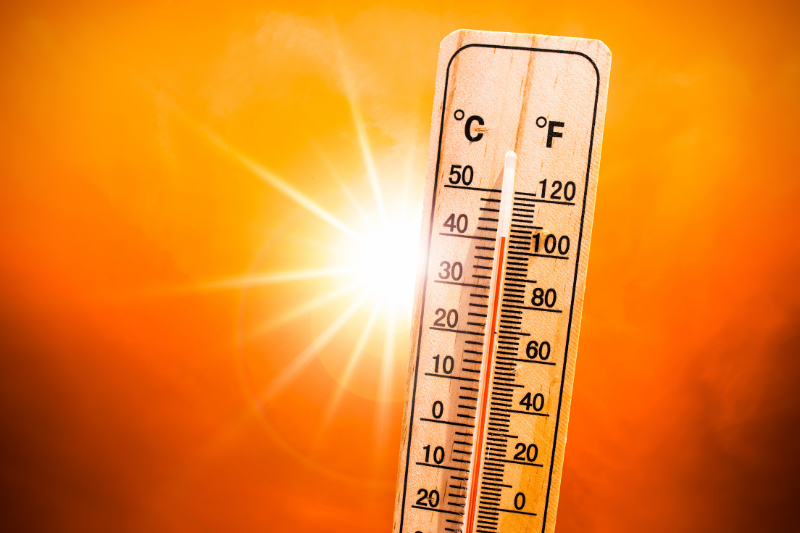
We Service Mobile Parks In Michigan Including Macomb County, Oakland County, Lapeer County, St Clair County, Wayne County And More
contact info
Homesaver Contracting Company
1(586)610-8608
680 Quatro Lane
Addison Township, Mi. 48367
November 18, 2025

If you’ve ever stepped inside your mobile home on a 90-degree afternoon and felt the instant wave of hot, stale air, you know just how fast heat can build up. But here’s the good news: a few targeted repairs and smart upgrades can make a world of difference.
Seasonal maintenance isn’t just about comfort—it’s also about saving money and protecting your home. When your cooling system is fighting against poor insulation, air leaks, or damaged skirting, it has to work twice as hard to maintain a livable temperature. That means higher energy bills, shorter HVAC lifespan, and a whole lot of unnecessary frustration. Taking the time to address these common heat traps before or during the summer can lead to real improvements in both temperature control and monthly costs.
Insulation repair is one of the most effective ways to improve mobile home cooling, yet it’s often overlooked. Many mobile and manufactured homes—especially those built more than 10 years ago—were constructed with thin or low-grade insulation materials. Over time, that insulation can settle, shift, become water-damaged, or degrade, leaving your home vulnerable to the summer heat.
Start with a thorough inspection of these key areas:
Not sure if your insulation is still doing its job? Watch for these clues:
Modern insulation materials like spray foam, rigid board, or high-R-value fiberglass can drastically reduce heat transfer. Here’s what you get when you upgrade:
Even the best insulation won’t do much if cool air is constantly escaping through tiny cracks and gaps. Air leaks are one of the most common culprits behind poor mobile home cooling and inefficient HVAC systems. Luckily, sealing these trouble spots is one of the easiest and most cost-effective summer maintenance tasks you can tackle.
In mobile and manufactured homes, air leaks tend to show up in:
When your home is riddled with gaps, your cooling system works overtime to compensate. This leads to:
Mobile home skirting does more than just improve curb appeal—it plays a vital role in mobile home cooling and ventilation, especially during Michigan’s hot and humid summers. The skirting (or underpinning) acts as a barrier between your home and the ground, protecting the underbelly from pests, moisture, and heat buildup.
In the heat of summer, warm air can become trapped beneath your mobile home if skirting is damaged, improperly installed, or missing panels altogether. This trapped heat radiates upward through the floor, warming your living space from below and making your air conditioner work harder than necessary.
Take a walk around your home and look for:
For optimal cooling, consider upgrading to vented skirting. These specially designed panels promote air circulation underneath the home, helping to dissipate heat and prevent humidity buildup. The result? A cooler, drier underbelly—and a more comfortable home above.
If you’ve ever touched the metal roof of a mobile home in July, you know how hot it can get. Dark, untreated, or aging roofs absorb a tremendous amount of solar heat, which then transfers directly into your home. This is a major obstacle to efficient mobile home cooling—but fortunately, there’s a solution.
Unlike homes with large attics or complex ventilation systems, mobile homes often have a very thin layer of separation between the roof and your interior ceiling. That means any heat the roof collects during the day ends up directly affecting indoor temperatures.
A professionally applied reflective roof coating can drastically reduce heat absorption. These coatings are designed to reflect sunlight and block UV rays, keeping the surface temperature of your roof significantly lower.
Here’s what you gain with a reflective upgrade:
Homeowners can see energy savings of up to 20% during peak summer months with a quality roof treatment.
Your air conditioning system is the heart of your mobile home cooling strategy—but even the most powerful unit won’t do much good if your HVAC and ductwork are dirty, damaged, or poorly insulated. In fact, clogged filters and leaky ducts are two of the biggest culprits behind poor cooling performance and rising energy bills.
Over time, dust, pollen, and debris build up in your system’s filters. When filters become clogged, your HVAC system has to work harder to push cool air through, which not only reduces performance but also increases wear and tear.
When to replace your filters:
Many mobile homes have ductwork running beneath the floor or through tight crawlspaces. Over the years, these ducts can develop cracks, lose insulation, or become disconnected. This allows cool air to leak into unoccupied spaces—essentially cooling your crawlspace instead of your living room.
Why ductwork sealing and insulation matter:
Staying cool in your mobile home doesn’t have to involve a complete renovation or expensive technology. As we’ve outlined in this guide, small, strategic repairs—like insulation upgrades, sealing air leaks, refreshing your skirting, and applying reflective roof coatings—can dramatically improve mobile home cooling performance and reduce your energy bills.
These aren't just quick fixes; they’re smart investments in your comfort, health, and home value.
The sooner you tackle these seasonal maintenance projects, the better. Proactive summer prep can prevent heat-related damage, reduce wear on your HVAC system, and help you avoid emergency repairs when the mercury spikes. Whether you're living in your mobile home year-round or seasonally, now is the time to ensure it’s summer-ready.
When it comes to mobile and manufactured home cooling, trust the team that knows these homes inside and out. At Homesaver Contracting Company, we specialize in tailored solutions that beat the heat and bring long-lasting results.
📞 Call Now: (586) 610-8608
📧 Email: homesavercontractingco@gmail.com
🌐 Visit: www.homesaverremodeling.com
